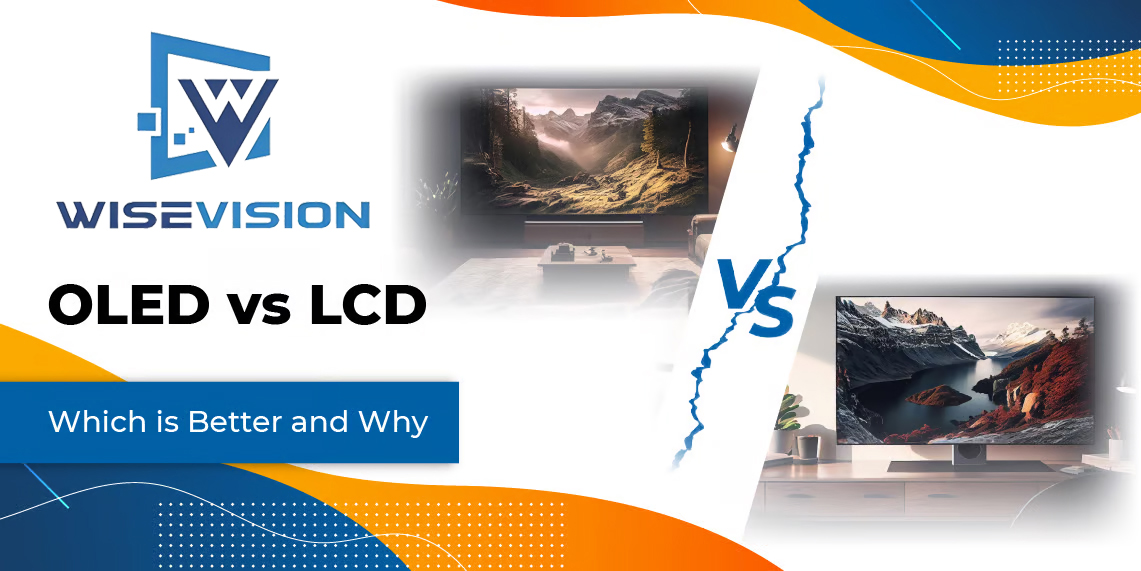
In the ever-evolving world of technology, the debate between LCD and OLED display technologies is a hot topic. As a tech enthusiast, I’ve often found myself caught in the crossfire of this debate, trying to determine which display technology offers the best visual experience, longevity, and value for money. In this comprehensive guide, we will delve into the intricacies of both LCD and OLED displays, evaluating their performance in terms of picture quality, color accuracy, contrast ratio, and lifespan. We will also assess their energy efficiency, comparing which of the two is more eco-friendly. Furthermore, we will discuss the cost implications of both technologies, helping you decide if the superior OLED technology is worth the extra investment over the more affordable LCD. Ultimately, our goal is to provide you with the knowledge and insights needed to make an informed decision on which display technology is the right fit for your needs. Trust us to guide you through this technological maze, as we explore the pros and cons of LCD and OLED displays.
1. Understanding the Technology: LCD and OLED Displays
When it comes to display technology, two of the most commonly used types are Liquid Crystal Display (LCD) and Organic Light Emitting Diodes (OLED). The fundamental difference between these two lies in the way they emit light. LCDs rely on a backlight to illuminate their liquid crystals, while OLEDs emit light through individual organic compounds.
Here are some key characteristics of each:
* LCDs are typically more affordable and offer better visibility in direct sunlight. They also consume less power when displaying brighter images, making them a popular choice for devices like laptops and smartphones.
* OLEDs, on the other hand, are known for their superior contrast ratios and ability to display true blacks. This is because each pixel in an OLED display is independently lit, allowing for precise control over image quality. They also offer wider viewing angles and faster refresh rates than LCDs.
However, it’s not just about the technology itself, but also how it’s implemented. For instance, the quality of an LCD display can vary greatly depending on factors such as the type of backlight used, the quality of the liquid crystals, and the overall design of the display. Similarly, the performance of an OLED display can be influenced by factors like the quality of the organic materials used and the efficiency of the pixel layout.
2. Evaluating the Picture Quality: LCD Vs OLED
One of the most critical factors to consider when comparing LCD and OLED displays is the picture quality. OLED displays are known for their ability to deliver deep black levels, which can significantly enhance the contrast ratio. This is because each pixel in an OLED display can be individually turned off, resulting in true blacks and a stunning level of detail in dark scenes. On the other hand, LCD displays use a backlight to illuminate their pixels, which can lead to lighter black levels and less contrast.
Another aspect to consider is the color accuracy and saturation. OLED displays generally offer a wider color gamut than LCDs, meaning they can display more colors and more accurate colors. This can result in a more vibrant and lifelike image. However, some users may find the colors on an OLED display to be overly saturated. In contrast, LCD displays often have more natural-looking colors, but they may not be as vibrant or accurate as those on an OLED display.
Finally, let’s discuss the viewing angles. OLED displays have a nearly perfect viewing angle, meaning the picture quality remains consistent regardless of the angle from which you’re viewing the screen. This is a significant advantage over LCD displays, which can suffer from color and contrast shifts when viewed from an angle. Here are some key points to remember:
* OLED displays offer deep black levels and high contrast ratios.
* OLED displays generally have a wider color gamut than LCDs.
* OLED displays have nearly perfect viewing angles.
* LCD displays often have more natural-looking colors.
* LCD displays can suffer from color and contrast shifts when viewed from an angle.
3. Analyzing the Color Accuracy: How LCD and OLED Compare
Delving into the realm of color accuracy, a critical factor in display technology, we find distinct differences between LCD and OLED. OLED displays are renowned for their ability to produce pure black levels, which results in a higher contrast ratio and vibrant colors. This is due to the fact that each pixel in an OLED display is individually lit, allowing for precise control over color and brightness. On the other hand, LCD displays utilize a backlight to illuminate their pixels, which can lead to less accurate color representation, especially in darker tones. However, high-quality LCDs with advanced technologies like Quantum Dot can compete closely with OLEDs in terms of color accuracy. In conclusion, while both technologies have their merits, OLED displays tend to have the upper hand in terms of color accuracy due to their unique pixel illumination method.
4. Assessing the Lifespan: OLED Vs LCD
While both OLED and LCD displays have their unique strengths, the lifespan of these technologies is a crucial factor to consider. OLED displays are known for their vibrant colors and deep blacks, but they tend to degrade over time, especially the blue pixels. This can lead to a phenomenon known as ‘burn-in’, where static images are permanently imprinted on the screen. On the other hand, LCD displays have a longer lifespan and are less prone to burn-in. However, they may suffer from backlight failure or color degradation over time. Therefore, in terms of lifespan, LCD might have a slight edge over OLED, but the choice between the two ultimately depends on the user’s specific needs and usage patterns.
Post time: Mar-19-2024

